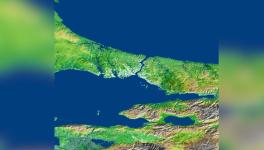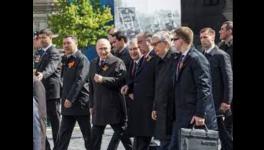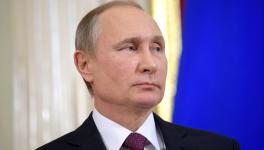Uruguayan Government Withdraws from UNASUR and Returns to TIAR

Luis Lacalle Pou assumed the presidency of Uruguay on March 1, amid massive protests rejecting his stand against the progressive governments of the region.
The incoming right-wing Uruguayan government, led by Luis Lacalle Pou of the National Party, announced its withdrawal from the Union of South American Nations (UNASUR) on March 10 in a statement issued by Uruguay’s Foreign Minister, Ernesto Talvi. “It is a regional body, based on political-ideological alignments and which, in fact, has ceased to function: it no longer has headquarters and lacks a general operational secretariat,” the government declared in the statement.
The same day, the government also decided to interrupt the withdrawal procedure from the Inter-American Treaty of Reciprocal Assistance (TIAR), which was requested by the former progressive president Tabaré Vázquez on September 24, 2019. The withdrawal of the TIAR “weakened the inter-American system and deprived our country of making its voice felt in the area of collective defense and hemispheric security,” read the statement from Foreign Ministry.
What is UNASUR?
UNASUR is a sub-regional integration mechanism, created during the period of left-wing governments in Latin America and the Caribbean. It was formalized on May 23, 2008, under the leadership of Commander Hugo Chávez with the objective to build integration in the cultural, economic, social and political areas while respecting the diversity of each of the member nations.
It originally consisted of 12 Latin American countries: Argentina, Bolivia, Brazil, Chile, Colombia, Ecuador, Guyana, Paraguay, Peru, Suriname, Uruguay and Venezuela and brought together over 400 million people with the vision of a Latin American identity based on the principle of unity in diversity.
However, in April 2018, Argentina, Brazil, Chile, Colombia, Paraguay and Peru, withdrew from the organization due their alignment with US imperialist interests. In March 2019, Ecuador also announced its withdrawal from the organization and the president of the country asked the bloc to return the headquarters building of the organization, based in its capital city, Quito. In November 2019, following the civic-military coup against the democratically elected president Evo Morales, the de-facto government expressed its intentions to withdraw Bolivia from UNASUR. Now, with the departure of Uruguay, the regional body is made up of only Guyana, Suriname and Venezuela.
What is TIAR?
The TIAR was imposed on the region by the United States at the beginning of the Cold War in 1947. It has a similar logic to the North Atlantic Treaty Organization (NATO), wherein any attack on a country on the continent would be considered as an attack on the US and its allies, and a justification to respond militarily.
On September 11 this year, in an assembly of the Organization of American States (OAS), a representative of Venezuelan opposition leader Juan Guaidó, Gustavo Tarre Briceño, with support from the Donald Trump’s administration, proposed TIAR’s activation against Venezuela to end the “usurpation of power” by constitutional president Nicolás Maduro. The proposal was passed with 12 votes in favor, 5 abstentions and 1 absence. Its activation provides a legal justification for foreign military intervention, economic sanctions and commercial blockade.
However, the TIAR is not applicable to Venezuela because Venezuela is neither a part of the OAS nor of the TIAR. The Bolivarian Republic of Venezuela officially left the OAS in April 2019. Years before leaving the OAS, in May 2013, the Venezuelan State had denounced the TIAR instrument. The denunciation is an established mechanism to cease the international commitments acquired by the state. Therefore, from the legal point of view, its provisions for the country can no longer be invoked.
By withdrawing Uruguay from the UNASUR and interrupting the withdrawal process from the TIAR, the incoming President Luis Lacalle Pou has given further evidence of his allegiance to the United States and its allies.
Lacalle Pou assumed the presidency of Uruguay on March 1 for the period of 2020-2025 and was welcomed with massive protests, rejecting the new president’s stand against the progressive governments of the region and his submission to the US. He won the second round of presidential elections, held in the country on November 24, against Daniel Martínez of the former left-wing government of Frente Amplio (Broad Front) with a slim margin of 1.5% of votes.
Get the latest reports & analysis with people's perspective on Protests, movements & deep analytical videos, discussions of the current affairs in your Telegram app. Subscribe to NewsClick's Telegram channel & get Real-Time updates on stories, as they get published on our website.
























